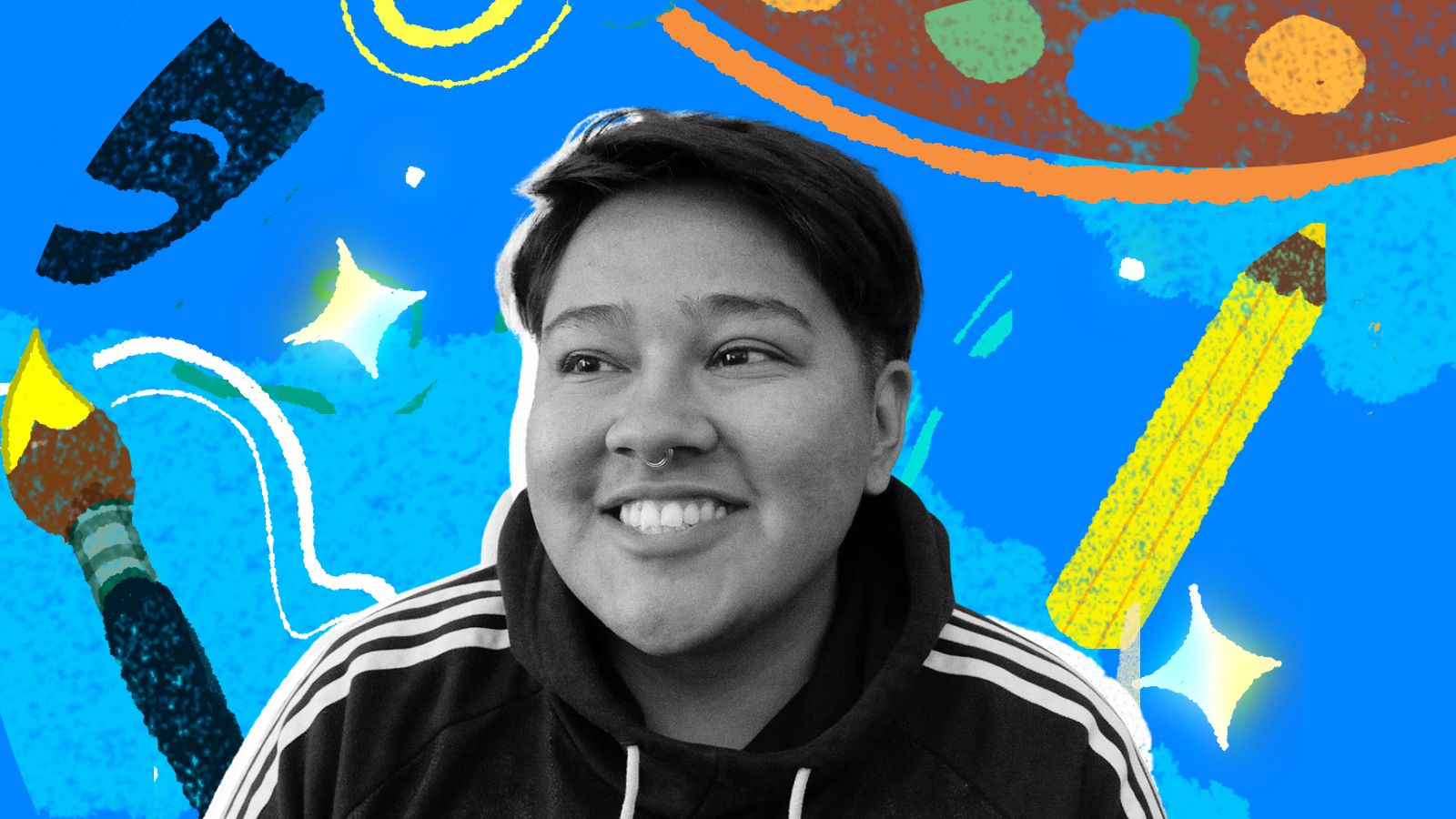As 2020 draws to a close, Fix asked 21 climate and justice leaders to offer their predictions for 2021. We’re presenting a handful of their responses in depth — because we could all use some extra hope these days. Be sure to check out the full list of predictions here.
Layel Camargo is the ecological arts and culture manager at The Center for Cultural Power — an organization led by artists and women of color who support narratives and artistic endeavors that “imagine a world where power is distributed equitably and where we live in harmony with nature.” A 2020 Fixer, Camargo (who uses they/them pronouns) is the creator behind the #ClimateWoke project, a video series that explores the intersection between climate and racial- and social-justice movements.
Camargo predicts that the new year will bring a steadily growing appreciation for the work of artists and cultural organizers — and in their own work, Camargo will be focusing on how art and narrative-shifting can support green labor movements. Their responses have been edited for length and clarity.
Promoting arts and culture in the digital age
 Since the beginning of the pandemic, there’s been a major shift in both philanthropy and organizational focus toward virtual engagement. That has led to arts and culture gaining the respect that they haven’t traditionally had, because social media is highly influenced by visual and mixed-media art. Artists have been able to find employment through this shift, which is a big deal considering that was one of the labor forces that was not deemed essential at the beginning of the pandemic.
Since the beginning of the pandemic, there’s been a major shift in both philanthropy and organizational focus toward virtual engagement. That has led to arts and culture gaining the respect that they haven’t traditionally had, because social media is highly influenced by visual and mixed-media art. Artists have been able to find employment through this shift, which is a big deal considering that was one of the labor forces that was not deemed essential at the beginning of the pandemic.
In the year ahead, I think we’re going to see more artists engaging in climate issues and centering environmental justice in their work. This trend has already begun — I look at how Black and brown people have used their voices to talk about racial issues in conversations about the environment and climate change. We’re even seeing an intersection between the disability movement and climate change. People are starting to realize that to survive the climate crisis and this political tension, which are intertwined, we need to build up the cultural sector.
Challenging fear through stories of abundance
A big theme that I’m going to try to amplify the most in 2021 is challenging fear. The strategy of building a culture of fear is what has led us to be driven by commerce, consumerism, and political shifts that are detrimental to frontline communities. The theme of scarcity is closely tied to fear in our society — COVID brought that up in the first couple of weeks, with the long lines at the grocery stores and items running out on the shelves.
I plan to combat that by building more narratives that promote joy, equity and, specifically, abundance. For instance, highlighting the resilience projects that have emerged to deal with COVID on Native reservations. Highlighting the efforts and successes of the landback movement, and how Black people are stepping into leadership in the climate movement. I plan to highlight how Black, brown, and Indigenous people in marginal situations continue to thrive.
Focusing on labor
Last year, I put out a video called “The Big C,” which tried to debunk this fiction we have in our movement that if we just stop fossil fuel extraction, everything’s going to be OK. The real problem with fossil fuel extraction is that it’s based on systems of oppression that allow for the labor exploitation of certain groups of people. Some of the things that we’re strategizing around are how do we get people in 2021 to see the value of their labor so they don’t feel pressured to go into workforces that keep them at low wages with poor benefits and also deplete our air, water, and soil. Within the next year, I’m hopeful that a high volume of labor groups will begin speaking out about the importance of green jobs and that more partnerships will form to make those connections.
In 2021, we’re going to see a lot of narratives about challenging the fossil fuel industry. A lot of people are looking at how fossil fuel infrastructure is collapsing, or starting to show signs of collapse. I think it’s going to be a smart time for environmental and labor organizations to start allying. Knowing that that’s where we need to go, if my narrative and visionary work on the front end of 2021 inspires that kind of movement collaboration by the end of it, I’ll feel like I’ve been successful.



